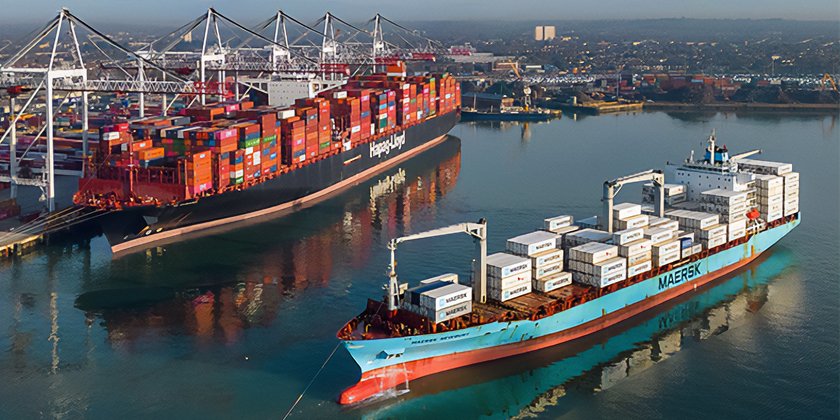
Maersk and Hapag-Lloyd Gemini Alliance will seek to reduce costs
HAMBURG : With returns sliding back to pre-Covid levels after the supercharged pandemic period shipping lines are looking to control costs again to keep their heads above water.
Hapag-Lloyd reported substantial declines in its revenue and income in 2023 with revenues down to $19 billion from more than $36 billion in 2022 and EBIT declining to $2.7 billion from $15.6 billion, and the prospect of the next few years becoming tighter, and even returning to pre-pandemic levels.
The new alliance of Hapag-Lloyd and Maersk as the Gemini Cooperation will begin operations in this volatile and uncertain landscape with geopolitical tensions in a number of regions, increased costs through environmental regulation and demand softening.
It would seem to be a tough time to introduce a hub and spoke system that shippers have not favoured in the past.
Shippers have generally baulked at transhipment of cargo because it raises costs, reduces reliability and slows the delivery of cargo, but Gemini is looking to buck this trend with a new type of transhipment service, in what Hapag-Lloyd CEO Mr. Rolf Habben Jansen said would be a difficult period for the lines.
Costs on the Gemini services are expected to be lower because there will be better utilisation with fewer port calls for the mainline ships, three instead of six, which reduces complexity. Additionally, more cargo can be bundled in hubs, which means that you achieve economies through scale, explained Jansen on 14 March in Hapag-Lloyd’s annual returns call.
Mr. Jansen said that the two lines would, as Gemini the twin suggests, operate these services without other carriers. He went on to say that training and internal processes and the adjustment of systems has already begun, with more details coming in April.
“Both Maersk and Hapag wanted to develop Gemini,” explained Jansen, “but the key to proposal was to route vessels mainly through ports and terminals that are controlled by either of the two partners,” explained Mr. Jansen.
Moreover, the shuttles are not traditional feeder ships, they will be operating between one or two destinations, Singapore to Vietnam or Tangier to Le Havre for example, “so that the reliability can be maintained,” explained Jansen, adding that these ships will be around 5,000-6,000 TEUs in size.
Perhaps a concern for UK shippers was the possibility that the UK would become a feeder destination, however, Jansen confirmed that a mainline call will be maintained to the UK.
Meanwhile, Jade Wesser Port, on Germany’s North Sea coast, will become a hub and can expect to see a significant increase in transhipment freight.
In the US Hapag-Lloyd is looking to consolidate some volumes with a number of providers, but Jansen did not elaborate on these plans.
As preparations are made for the introduction of Gemini, making the network successful will become ever more important in an increasingly challenging market, the carriers will need to cut costs and achieve their targets on reliability to attract shippers to a premium service.
